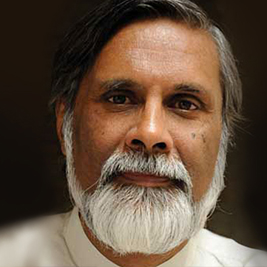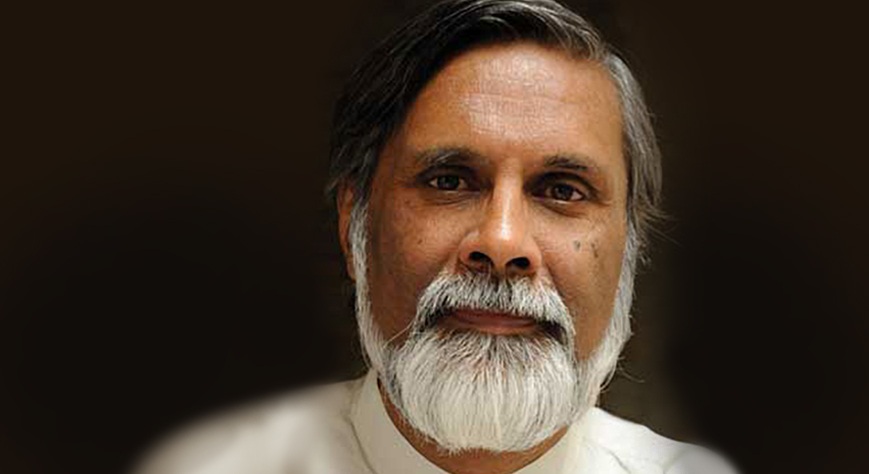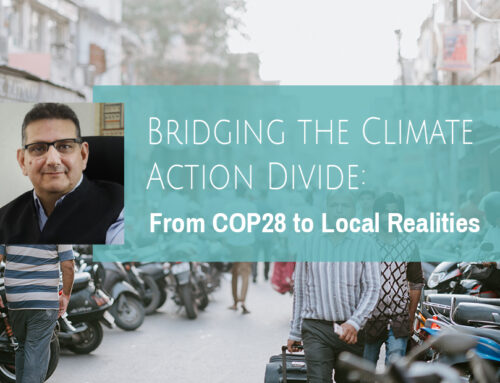Ashok B Lall believes that everybody has the right to demand comfortable housing
As an architect and teacher, Ashok B Lall has done many projects on sustainable building designs, but he always felt that they are like beautiful islands in dirty waters.
 “What is the use of these buildings if they are not useful for the people, if people don’t have access to them?” Mr Lall said.
“What is the use of these buildings if they are not useful for the people, if people don’t have access to them?” Mr Lall said.
“And it’s the people in the affordable sector that don’t have the resources or the knowledge to go for sustainable buildings. I wanted to bring my knowledge on buildings and creative expertise to the people who need it the most.
“Everybody has the right to right housing, and they should be aware enough to demand it. Demand because they deserve it.”
Ashok Lall has been leading Ashok B Lall Architects since 1981. With an interest and expertise in resource and energy efficient Affordable Urban Housing solutions for developing countries, Mr Lall has designed affordable housing projects and researched, published and advocated for appropriate building design strategies and planning regulations that would lead to low-carbon urban futures.
Mr Lall believes that mandating building regulations is necessary to compel people to adopt them. “Building regulations need to evolve and be mandatory, and there have been developments in the right direction.”
“However, there also needs to be more awareness from the people who build and those who live in those buildings.”
Mr Lall feels that people have forgotten a house is not just an enclosed space within four walls. “Housing is a social space. The locality and the surrounding areas, the design – everything matters for your wellbeing,” he said.
“It’s not just a place to hold your furniture and belongings. People have forgotten that somewhere down the line. Design can have a direct impact on the wellbeing of people.”
Mr Lall is working with GPBN on the Healthy Buildings project to promote the development of healthy buildings in the affordable housing sector in India.
“It’s not just construction materials, building designs also have an impact on the health and safety of the inhabitants. Unhealthy designs have a negative impact – Long windows without shading, no insulation over the roof, no mosquito screens.”
“In one of the conversations we had with the inhabitants of an affordable housing, the ladies told us that the mosquito season brings in higher cases of dengue. So mosquito nets, ensuring that there is no gap under the door from where mosquitoes can come in – these are necessary.”
But don’t sustainably designed buildings cost more?
Mr Lall thinks that it is a misconception. “If you take designs from higher income buildings where there are high-tech energy-efficient windows, multiple swimming pools and try to put them in the affordable segment, of course, they will cost more.”
“We are talking about passive design measures – things like optimal shading for windows, insulation on the roofs, cross-ventilation – they do not cost more. If there is no option for cross-ventilation, a ventilation can be placed on the opposite wall. Or the ventilation can open into the verandah.
“And with group housing, the economies of scale can always negate any initial higher investment costs.”
Group Housing – the biggest opportunity for affordable housing in India
Mr Lall believes group housing holds the biggest opportunities for the affordable housing sector. “I have come to believe that group housing is the best for urban housing, not just because of the economy of scale, but also because of the benefits of community living. Common playground areas, community halls, social spaces for get togethers, rooftop vegetable gardens – these are not possible for single units or single houses.”
“When you are in group housing, public transport comes to you. That is one of the biggest advantages. When you have a large concentration of population in an area, there is more demand and opportunity for public transportation.”
However, the huge land pricing is a big challenge for group housing. Builders try to overcome this by locating affordable housing in outlying areas. While public transportation is beneficial, that is an additional cost if people have to travel a lot to their workplaces daily.
“The price of land is one of the biggest challenges. Ideally the ratio of construction cost to land cost should be 2 to 1. But in some urban areas in India it can go up to 1 to 20,” Mr Lall said.
“If you tell a person living in slums that they will get a ‘pucca house’ (permanent housing structure) in a location that is 50 kms away, they will not be ready to move. Affordable housing should be near their places of work, otherwise such houses are basically of no use to them.”
“The outlying areas may be cheaper, but there can be issues with infrastructure, water supplies, access to schools or medical facilities. They cannot afford to incur costs on travelling to access these.”
Mandatory regulations and public awareness must go hand in hand
More work needs to be done for wider and faster adoption of sustainable and healthy building designs. “We are moving in the right direction, but it is still slow, considering the rapid urbanisation in India. Mandating building regulations can help speed things up.”
“But, public awareness is equally essential.”
Mr Lall recalls a case where his team surveyed a multi-storey building. “There was no rooftop insulation, and the people living on the top floor thought that their flat was hot because of the climate.”
“We took them to a flat on the lower floor, with the same plan and no AC. They were surprised by the change they could feel in the thermal condition of this flat.
“You need to be aware to demand what you deserve.”
Mr Lall believes that organisations like GBPN can help have massive public campaigns to improve awareness. “People need to know and understand that they should adopt building designs because they are optimal, not because they are fashionable.
“Healthy designs are important for the well-being of the inhabitants and for the environment. There are no two ways about it.”
Share This Story, Choose Your Platform!
Stay in touch with how we’re transforming the buildings sector
GBPN runs innovative building policy reform programs in key regions around the world that aim to tackle the climate emergency by decarbonising the buildings sector. Stay up to date with our newsletter.
Stay in touch with how we’re transforming the buildings sector
GBPN runs innovative building policy reform programs in key regions around the world that aim to tackle the climate emergency by decarbonising the buildings sector. Stay up to date with our newsletter.







